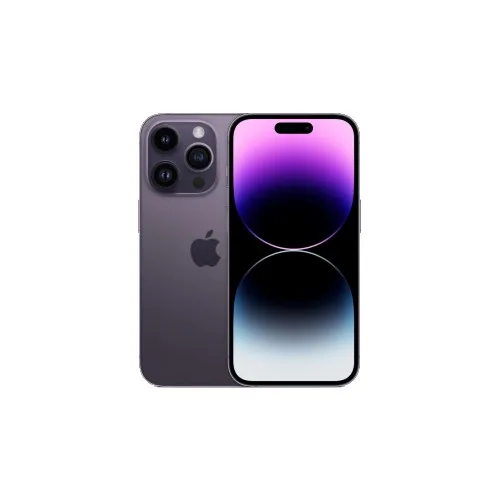Apple iPhone 14 Pro review: Apple’s dynamic Pro phone
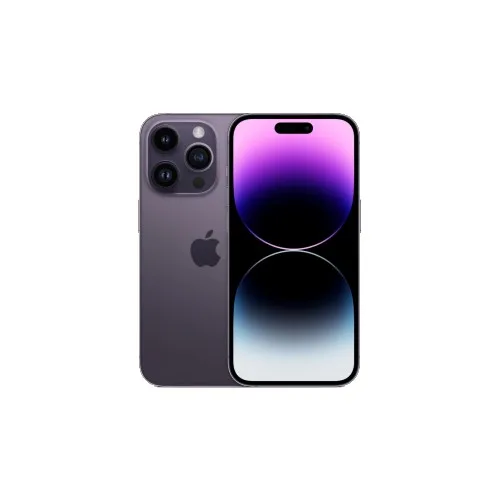
-
- Battery Score
- Camera Score
4.5
- Design Score
3.5
- Performance Score
5
- Battery Score
Summary
Quick verdict: Apple's updates to the iPhone 14 Pro are likely too subtle to be worthwhile for everyday users, but if you need its pro camera features and processing power, it's a great flagship phone choice.
- A16 blows away the competition
- Excellent low light performance
- Dynamic island makes smart use of front camera space
- Seriously expensive
- Overkill for a lot of iPhone users
- Some wireless chargers get it quite hot
Details
Pricing & Availability
| RRP | $0 |
| Launch date | 2022-09 |
Pick it up and you're not likely to spot too many big differences between 2022's iPhone 14 Pro and 2021's iPhone 13 Pro. That's because Apple's really only tweaked around a few specific areas and functions – some of which are clearly more software than hardware – for its 2022 flagship handset.
Like the 2021 model, it bears the Pro suffix because Apple wants it to appeal to more heavy-duty users, especially those who want to take advantage of its expanded camera capabilities.
It's easily my favourite of the 2022 iPhone 14 crop. However, it'll be overkill for many users and they may find the iPhone 14's lighter touch on their wallet easier to bear.
Design: Always-on display and Dynamic Island work well
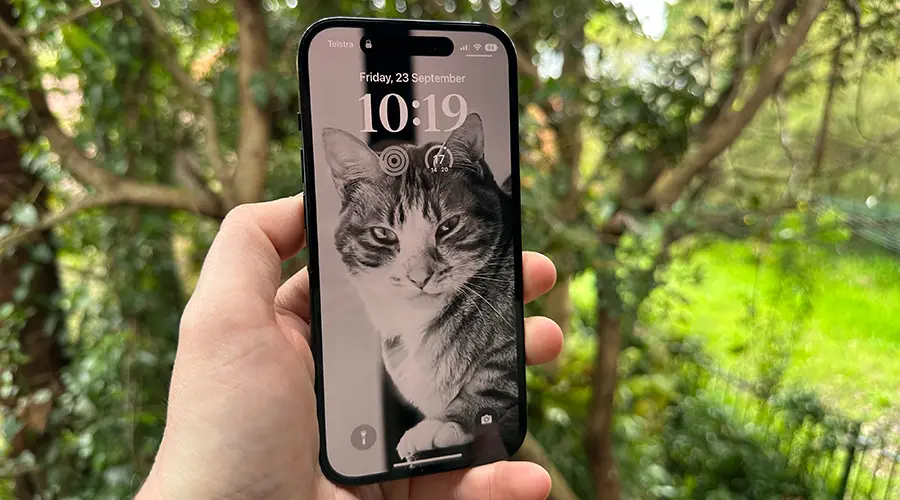
Image: Alex Kidman/Finder
The iPhone 14 Pro is built around a 6.1-inch OLED display with a 2566x1179 resolution and support for between 1Hz and 120Hz refresh rates. That's a very slight resolution bump up from the iPhone 13 Pro, but not so much that the naked eye is going to spot it.
What you will spot early on is the inclusion of an always-on display feature. Apple is very late to the party here as a number of Android competitors have offered this kind of feature for years.
However, in typical Apple style, it's tweaked around what's possible, offering not just a clock and simple notifications but also a cleverly dimmed photo display. The always-on display refreshes at just 1Hz. It means its effect on battery life is minimal while making it very clear which phone is which, giving you more personalisation even in a sea of similar-looking iPhones.
6.1 inches is a rather sweet spot for easy hand gripping if you're the type that finds larger phones a bit of a clumsy challenge to hold onto. It does mean the more expensive Pro model has the same physical characteristics for holding as the cheaper iPhone 14 model.
However, your colour choices are different, with Space Black, Silver, Gold and Deep Purple finishes on offer.
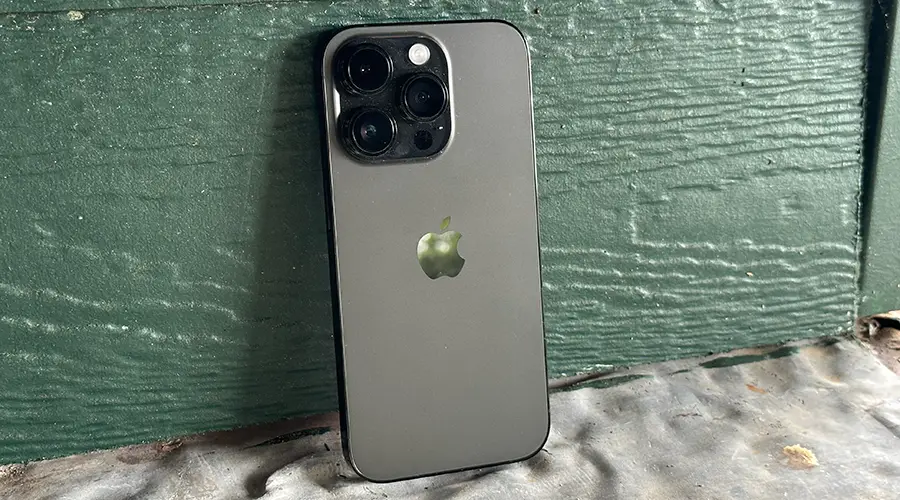
Image: Alex Kidman/Finder
Apple loaned me a Space Black model for review and it's much like Space Black has been for years. The looker of the bunch is clearly Deep Purple, which has a lovely finish.
Mind you, as always, it's a very smart move to throw a case onto an iPhone given their cost, at which point they can become any colour or pattern you favour.
Apple does state the same essential robust IP68 water resistance and Ceramic Shield glass as last year's model, so there's some resistance against accidents. Still, I wouldn't risk a $1,749+ phone for the price of a cheap phone case.
What is genuinely new in the iPhone 14 Pro is the change at the front to the Face ID camera notch. It's not a notch anymore, because the Pro iPhone 14 models instead get a little camera oval array – or "pill" if you must – for selfie and Face ID verification.
Apple could have stopped there – and again, it's behind the Android pace on holepunch-style camera notches – but instead it's added a new feature with a very silly name.
The front camera pill is the "Dynamic Island" and the reason it gets that marketing moniker is because it uses the surrounding space to change shape and size relative to the task you're doing or the notification you need.
Timers and music playback appear as side elements to the cameras, while Apple Pay verification comes up as a larger rounded square affair to let you know it's worked, for example.
It's very clever software, although it is worth noting that this isn't an under-display camera a la the Galaxy Z Fold 4. You never get any animated elements over where the cameras are. You're more distracted – sometimes – from their presence.
It's very subjective, but there is another issue with the Dynamic Island beyond its silly name. Honestly, while Apple's Face ID camera notch has been bigger than the competition for years now, I've largely grown to ignore it. It was just there, it was never part of the active screen, so it didn't matter to my day-to-day iPhone usage.
That's not true for the Dynamic Island, which constantly reminds you of its existence. As such, I'm always aware that there's this black blob on my iPhone 14 Pro screen in a way that I wasn't quite so fussed about with older Face ID-capable iPhones.
Camera: 48MP is great for the Pros
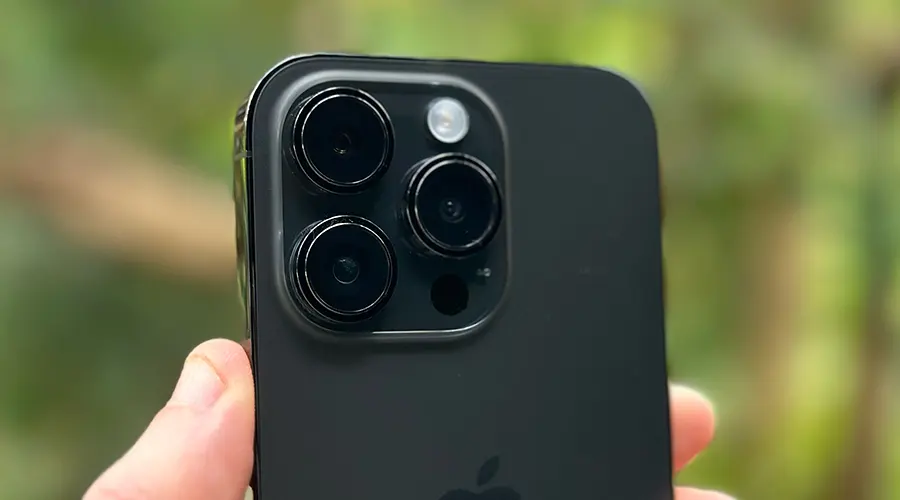
Image: Alex Kidman/Finder
The biggest selling point for Apple's Pro phones is its camera improvements. Apple's contention is that the iPhone 14 is enough for everyday point-and-shoot camera folk, but if you're serious about your photography, you need to step up to the Pro models.
Like prior iPhone Pro handsets, at the rear you'll find a trio of lenses covering wide, ultra-wide and telephoto lenses. Apple's made some significant changes here, stepping down the aperture on the 12MP ultrawide lens to f/2.2 for example, or adding its Photonic Engine rendering to all shots for purported better overall image quality.
But it's in the primary lens that it's made the biggest change, stepping up from the 12MP sensor style it's used for years to a 48MP sensor while also shifting to an effective 24mm focal length, wider than the 26mm length it's offered for some years.
This has a number of effects on how the iPhone 14 Pro can take images. It adds pixel binning, combining 4 pixels into 1 larger sensor site to the iPhone. That's not a new technology for Android users, but it does allow for even more scope for low-light photography, an area where Apple has done very well in recent years.
So how good is it? To test it out, I went out to a local park late one night to do some sample snapping, taking the iPhone 14 Pro as well as the 14 Pro Max, the cheaper iPhone 14, last year's iPhone 13 Pro Max and Google's competing Pixel 6 Pro for comparison.
Here's a night silhouette shot of some trees at the park, a challenging balance topic for any phone. All shots were taken handheld, allowing each phone to pick focus, exposure time and in their relative night modes.
First up is last year's iPhone 13 Pro, which delivered a rather cold-toned shot with some noise:
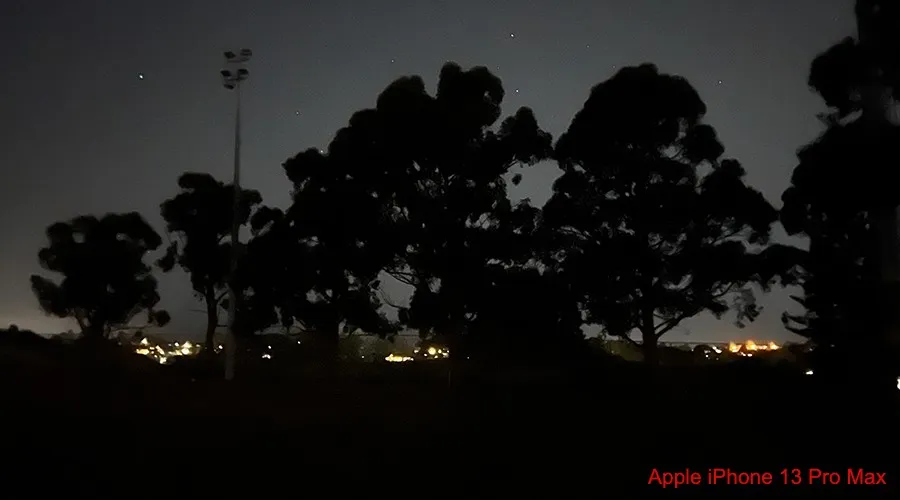
Image: Alex Kidman/Finder
Google's Pixel 6 Pro, one of my favourite Android low-light performers, does a better colour job, still with some noise:
Image: Alex Kidman/Finder
The cheaper iPhone 14 does a fair job of it, but as you'd absolutely expect it's not quite at the Pro level, with some focus and noise issues of its own:
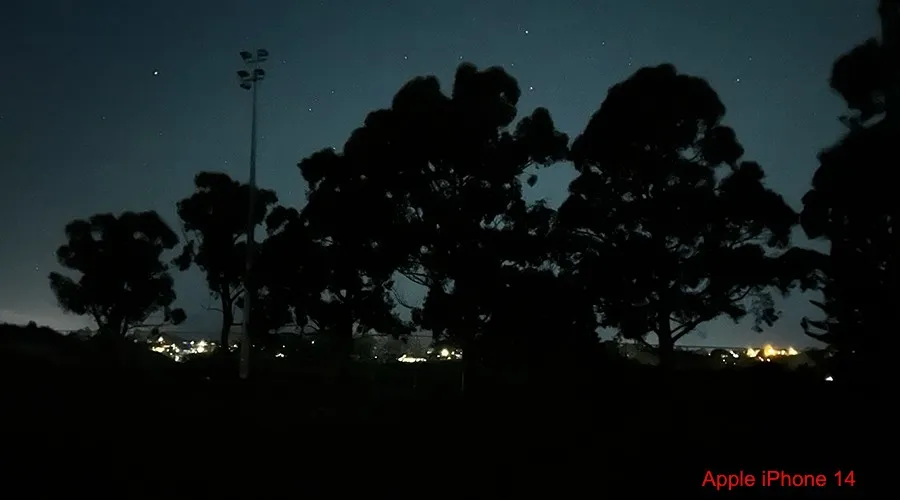
Image: Alex Kidman/Finder
Stepping up to the iPhone 14 Pro delivered a very pleasing shot overall given the conditions:
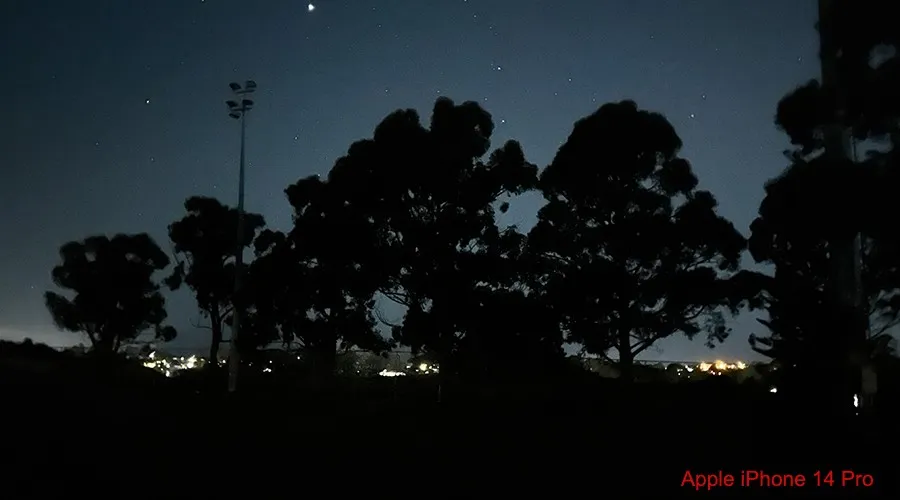
Image: Alex Kidman/Finder
And much the same shot came out of the iPhone 14 Pro Max, which is not surprising as it's got the exact same camera specifications:
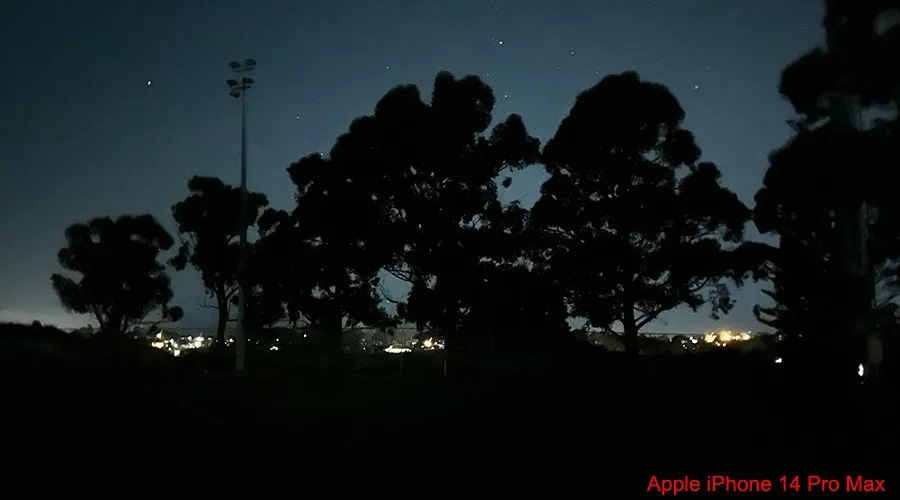
Image: Alex Kidman/Finder
Low-light shooting isn't just a story of brutal shooting conditions, but also the way that the primary 48MP sensor can pick up additional light in situations with changing light patterns as well. Here the iPhone 14 Pro impresses, grabbing plenty of sharp details with minimal user intervention if that's your style. Naturally, if you do prefer a more manual approach, you can totally go down that path too.
Within the 2022 iPhone 14 Pro phone space, there's a choice between the smaller iPhone 14 Pro and the 14 Pro Max to make. It's a balancing act, because I do find the smaller body of the iPhone 14 Pro easier to grasp for quick photo taking. However, its smaller body means it has a smaller battery capacity, so the Pro Max model might make more sense for you if you regularly do long days of pro photo shooting.
You can opt to shoot with the full 48MP sensor in Apple's ProRAW mode for loads of detail at the price of considerably larger file sizes. Photos here can be quite stunning, but it's absolutely one of those inclusions that makes me wish Apple supported microSD card expansion. Sure, you can spend a bomb on a 1TB iPhone 14 Pro if you've got the cash, but being able to flip around microSD would be much more photography-friendly, Apple.
The third telephoto lens gets a new quirk despite being essentially the same hardware as last year's model, topping out at 3x optical or 15x digital. That's through a new 2x zoom mode that doesn't strictly use the telephoto lens at all. Instead, it leans onto the 48MP sensor, cropping it down to give you an effective 2x zoom. This is especially effective with the phone's portrait modes, offering even more scope for some genuinely good depth effects on a smartphone.
On the video side, cinematic mode can now work with 4K video while there's a new gimbal-free "action camera" mode within the primary video section of Apple's default camera app.
The stabilisation here is quite remarkable, but it's also very fussy about light levels, even in relatively well-illuminated indoor environments.
The premium phone space is absolutely defined by the quality of its cameras. Are there areas where I wish Apple would push a little harder?
Absolutely; it'd be great to finally see a periscopic telephoto lens on phones that easily tip the $2,000 mark given its Android competitors are already in that space. Likewise, microSD or other storage expansion options would be very welcome given the expanded file size needed by that 48MP lens.
However, none of those aspirations get away from the fact that the iPhone 14 Pro is one of the very best camera phones I've ever tested.
Apple iPhone 14 Pro sample photos:
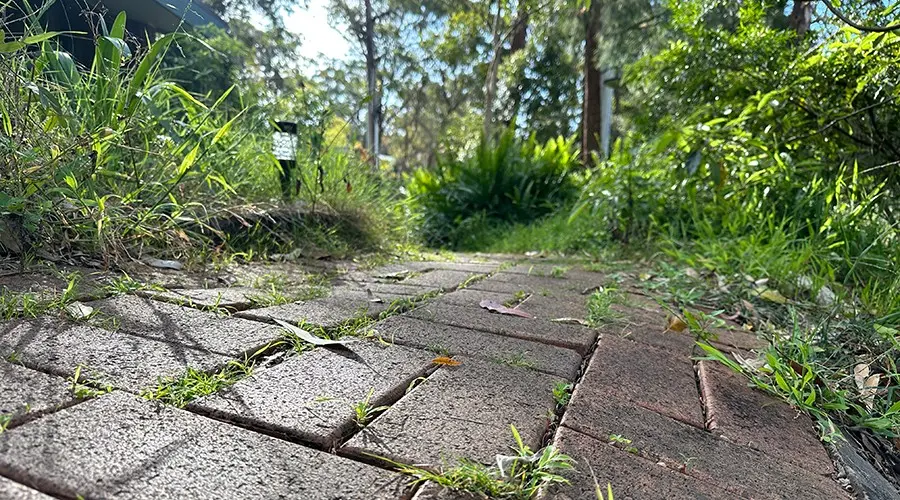
Image: Alex Kidman/Finder

Image: Alex Kidman/Finder

Image: Alex Kidman/Finder

Image: Alex Kidman/Finder

Image: Alex Kidman/Finder
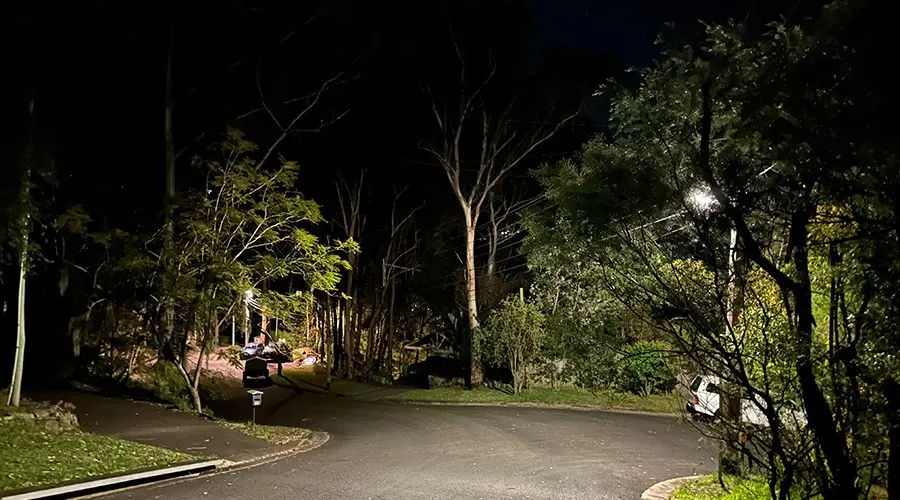
Image: Alex Kidman/Finder
Performance: A16 Bionic retains Apple's performance crown
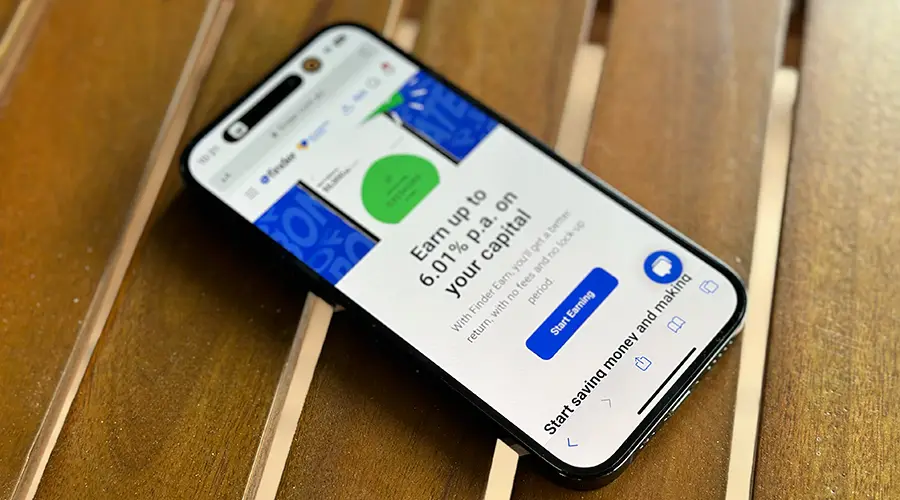
Image: Alex Kidman/Finder
While the Apple iPhone 14 and Apple iPhone 14 Plus use last year's A15 Bionic – albeit the heavier-duty model found in the iPhone 13 Pro handsets – the iPhone 14 Pro and Pro Max models work on a new processor, the inventively named A16 Bionic.
Given Apple's keeping several older generation models around, it raises a lot of value questions on performance. You'd expect the A16 bionic to rule the roost. There would be serious problems if that wasn't the case. Still, if you're looking at older models, and especially if you're considering an upgrade from an older iPhone, it's worth seeing how much of a difference that can make.
Using Geekbench 5's CPU test, here's how the iPhone 14 Pro stacks up against current and prior iPhone generations:
It's a beast, in other words, and that does mean it very handily sees off its Android competition if straight-line numerical bragging rights are important to you. Here's how it compares against its current premium Android competition:
Those figures do suggest that the performance jump against the iPhone 13 generation isn't going to be one worth upgrading for. It's maybe even true for iPhone 12 CPU performance because the reality here is that iOS is such a finely tuned operating system that I'm yet to really hit too many apps that genuinely tax its capabilities.
I said the exact same thing last year about the iPhone 13 Pro. It's a genuine challenge for premium smartphone makers.
If Apple does ever go down a DeX-style route of allowing iPhones to work as portable desktops, then the power of these impressive CPUs may be properly stretched with true multitasking.
For now, though, most users will very happy with the speed of the iPhone 14 Pro, which really doesn't miss a beat… but equally they're not likely to really stretch its capabilities to their full extent.
Speaking of stretching capabilities, Apple has once again sold Australian buyers short on 5G compatibility. The iPhone 14 Pro is 5G-capable in Australia, but only on sub-6Ghz frequencies and not the faster mmWave networks.
That's not an uncommon story for phones in Australia, sadly, save for the Pixel 6 Pro, but it's still galling that Apple has models that include this capability – most notably the USA models – that could include this capability, making it a genuine premium model. Instead, it saves itself a few cents per model on chipsets, leaving us with a lesser phone.
The iPhone 14 Pro also has a few features that it's downright impossible for me to test, although they are present in the Australian model at a technical level.
It's capable of working as a satellite phone for emergency SOS communications only, with a clever inbuilt software system for lining up the phone so it can see satellites neatly enough to send limited data packets.
At least, that's the theory, but the practical side of it is that it won't launch as a service until November, and even then in the US and Canada only. It's not clear what that means if you're in, say, Hawaii, Alaska or Puerto Rico, but leaving those aside, there's intent but no announced timeframe for Australian availability of the service.
So it's there, and it's very easy to see how it could be a literal lifesaver in remote outback Australia, but I can't test it. In theory, if you've got a trip to the US after November 2022 with an Australian iPhone 14 Pro and you do end up in trouble, you might be able to.
Theoretically, I could test the new crash detection feature, which senses the extreme forces that occur in vehicle accidents by sounding a siren and alerting authorities if you don't respond relatively quickly to an onscreen command.
Except that apparently, Finder doesn't have the budget for crash cars. No car insurance company will cover a vehicle you intend to deliberately run into a tree anyway.
It's one of those features that could be very good if you need it, but again it's effectively impossible to verify in a safe and sane way without the use of crash test dummies.
Battery: Smaller battery leads to lesser performance
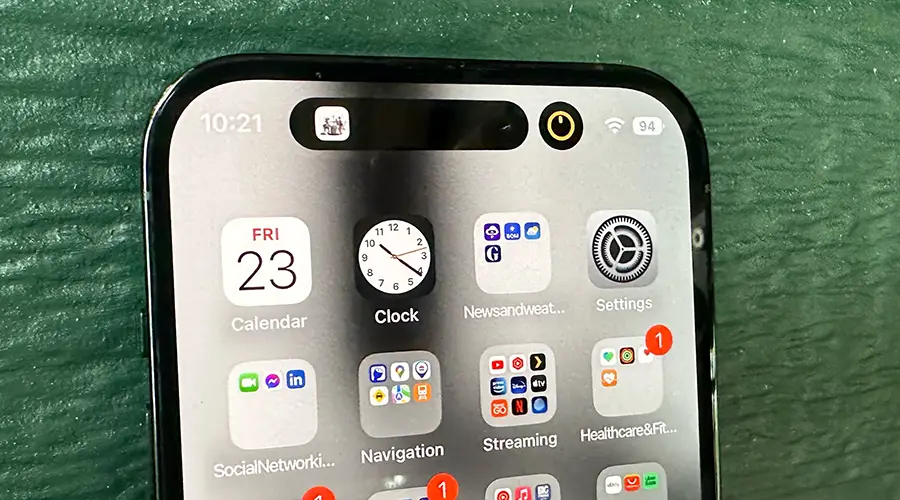
Image: Alex Kidman/Finder
The 6.1-inch size of the iPhone 14 Pro does make it easy to hold in the hand, but it creates a problem for Apple. Smaller phones have less space for batteries, and it's long led to a situation where the best iPhone models for battery life are the larger handsets.
Apple famously doesn't announce actual battery capacities for iPhones, instead talking vaguely about video playback estimations for its handsets.
External sources suggest that the iPhone 14 Pro has a 3,200mAh battery pack. If that's accurate, then it's slightly up from the 3,095mAh battery system in the iPhone 13 Pro but still well behind the 4,352mAh battery in the iPhone 13 Pro Max.
Then again, the iPhone 14 Pro has to contend with a higher performance processor and the presence of that always-on display sapping at its battery endurance.
Here's how it compares against competitors using Finder's battery test:
The iPhone 14 Pro runs in that test identically to the iPhone 13 Pro and anecdotally it's much the same story.
After a week's testing, I've typically found myself with around 20% battery at the most by the end of the day, mostly on 4G networks rather than 5G. It's absolutely not hard to see the iPhone 14 Pro failing to last a full day if you're going to use it heavily.
When it comes time to charge the iPhone 14 Pro, you're still stuck in the land of lightning cables. That's all you get in the box too, so you'll have to supply your own charger to add electrons to it.
The iPhone 14 Pro also supports Qi wireless charging at up to 15W with a Magsafe-certified wireless charger, or just 7.5W with a regular Qi charger.
One oddity that I've noticed with wireless charging of the iPhone 14 Pro is that its heat regulation doesn't seem to be very good. More than once – bear in mind, this is only within a week's testing – it's stopped charging altogether, claiming to be too hot to safely continue.
I love a phone that won't catch fire unnecessarily, but less so when the issue seems to be with how it's working with the Qi standard and its own cooling.
Testing with an iPhone 13 Pro on the same Magsafe and regular Qi chargers did not replicate that problem. Hopefully, it's a software-managed feature and not an issue with heat dissipation when the iPhone 14 Pro charges wirelessly.
Should you buy the Apple iPhone 14 Pro?
- Buy it if you want the best balanced iPhone 14 model for the money.
- Don't buy it if you don’t want or need the pro camera features.
The iPhone 14 Pro doesn't represent some radical reinvention of what Apple does with its iPhone models, year in and year out. Sure, there are some interesting new features such as the Dynamic Island, always-on display, satellite SOS (eventually, maybe) and car crash detection (which you never want to test) to add value to its proposition.
Still, it's a pro device at a pro price, and that presents more than the usual quantity of challenges if you're after a good value iPhone specifically. The iPhone 14 isn't as fast, and it's notably nowhere near as capable in overall camera terms, but you're getting an iPhone of much the same size for less money.
Moreover, Apple's kept the iPhone 13 and 13 mini in its line-up, making it even more feasible to score a lower-cost iPhone with only a small-scale performance hit. Notably, the iPhone 13 Pro isn't still officially on sale from Apple at a reduced price.
What all of that means is you do need to have that genuine need for the pro cameras specifically for them to make sense as the iPhone you should buy. They're a lot of fun and superbly powerful phones if your budget can stand up to them though, and easily my favourite of this year's iPhone 14 family.
Pricing and availability
The iPhone 14 Pro retails in Australia with pricing starting from $1,749 up to $2,599 or on contract terms from a variety of carriers.

Price
RRP: $1,419.00Where to buy

Specifications
Display
Camera
Physical Dimensions
Connectivity
Power, storage and battery
Device features
How we tested
The iPhone 14 Pro used for testing was loaned to me by Apple for the purposes of review. I tested it for over a week, running the battery down on multiple days with repeated benchmark and application testing as well as in-depth camera testing to put it through its paces.
I have extensive testing experience with iPhones, having reviewed every single iPhone model ever released in Australia alongside more than 2 decades of product reviewing across countless smartphones, mobile phones and other gadgets. I'm a multi-time Australian IT Journo award winner, including awards for best reviewer and best technical journalist.
Alex Finder
Senior editor
You are about to post a question on finder.com.au:
- Do not enter personal information (eg. surname, phone number, bank details) as your question will be made public
- finder.com.au is a financial comparison and information service, not a bank or product provider
- We cannot provide you with personal advice or recommendations
- Your answer might already be waiting – check previous questions below to see if yours has already been asked
Finder only provides general advice and factual information, so consider your own circumstances, or seek advice before you decide to act on our content. By submitting a question, you're accepting our Terms Of Service and Finder Group Privacy & Cookies Policy.
This site is protected by reCAPTCHA and the Privacy Policy and Terms of Service apply.

